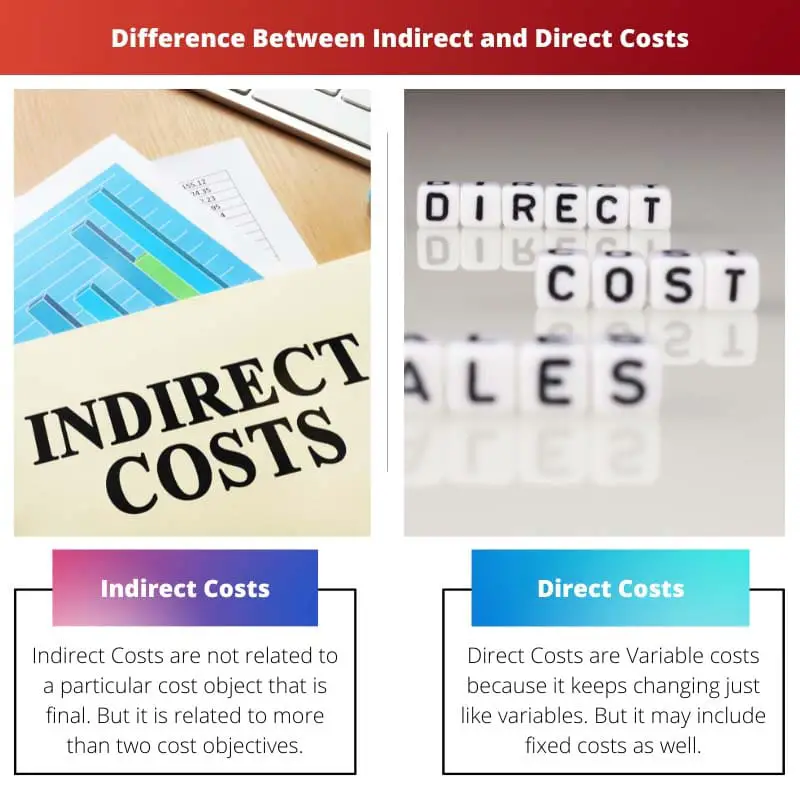Production is something when various materials are combined to make something so that it can be used for consumption. It is an act that is used to create goods and services.
Capital, labour and land are considered as the three units which are very necessary for production. Energy and materials required in the production are considered secondary products.
If there is an increasing income and the price of the goods and services are increasing, which in turn are increasing the GDP, then it is considered good. Three important productions are household, public and market.
Costs are very important to determine the profit. Direct and Indirect costs are related to sales and production.
Key Takeaways
- Direct costs are directly traced to a product or service, while indirect costs are shared among various products or services.
- Direct costs include raw materials and labor, whereas indirect costs include utilities, rent, and management salaries.
- Accurate allocation of indirect costs is crucial for determining the profitability of individual products or services.
Indirect vs Direct Costs
Indirect costs refer to the expenses that cannot be directly attributed to a specific project or product, and include rent, utilities, administrative expenses and others. Direct costs refer to expenses that are directly connected to a specific project and include materials and labour.

Indirect costs are not related to the cost objects directly like facility, function or particular project. Indirect costs can be variable or be fixed.
It includes costs like security, administration, personnel etc. all these types of costs are not related to the production costs. One cost can be attributed as an indirect in one company, and in some other company, it may become direct.
Some of the indirect costs are overhead because such costs are ongoing transactions. It is not easy to allocate one cost to a project.
Costs that are directly attributed are called Direct Costs. When there is a production of a particular good, direct costs can be tied to it. Direct cost can be attached with the object of the cost. It can be anything from services to products to departments.
Direct costs are those costs that can be incurred by the companies or industries. Variable costs can be referred to as direct cost as it fluctuates very much depending upon the level of production.
Direct Costs can also include fixed costs. For example rent of the factory can be included with the production level.
Comparison Table
| Parameters of Comparison | Indirect Costs | Direct Costs |
|---|---|---|
| Expanded | Multiple cost objects. | Particular cost objects. |
| Identified as | Fixed Costs | Variable Costs |
| Place | Ascertained after direct costs. | Ascertained at beginning of the cost sheet. |
| Aggregate | Overhead cost | Prime Cost |
| Examples | Rent, advertisement, etc. | Materials used directly in production, labour, wages etc. |
What are Indirect Costs?
Indirect Costs are not related to a particular cost object that is final. But it is related to more than two cost objectives. Indirect costs are not like direct costs that can be attached directly. Indirect costs are ascertained after direct costs have been allocated.
Then the remaining costs that have been left in the cost objective are referred to as indirect costs.
Indirect costs will not be calculated if the final cost objective of the project or the company has been already included in the direct costs or other cost objectives.
Indirect costs are those costs that provide benefit to the company in other activities. Usually, indirect costs are grouped with the other costs so that they will provide benefit in the objectives.
The aggregate of indirect costs is called Overhead expenses, including utilities, rent, officers’ salaries, accounting department costs and personnel department costs, general, administrative expenses etc.
Indirect costs are a way through which a department or an organization knows what boundaries should be set in the administrative principle that is fair and what proportions each program would bear according to the costs.
The indirect costs rate is calculated by adding all the direct costs that have provided benefit and then including it as a, and after that unallowable costs, extraordinary expenditures are subtracted from it.
What are Direct Costs?
Direct Costs are Variable costs because it keeps changing just like variables. But it may include fixed costs as well. It includes direct materials and direct labour. Direct costs are very easy to attribute.
They are very straightforward in determining the object of the cost. For example, if there is a company that manufactures trucks and automobiles.
Then the bolt, glass, different parts of an automobile, steel etc., needed for the production will come under the category of direct costs.
The unit cost of Direct costs will/can change with time. It is not fixed. Depending upon the quantity, direct costs gets utilized.
While using the direct costs, the valuation of the inventory must be strictly monitored because when inventory is purchased at different amounts. It becomes important to keep track of direct costs.
Companies trace the inventory of direct costs using two methods. FIFO and LIFO (first-in, first-out) and (last-in, first-out).
Examples of Direct Costs include Direct labour, Direct materials, Manufacturing supplies, Wages for the production staff, Fuel or power consumption etc. when core business activities are performed and when the cost incurred by an organization can be attributed directly, then it becomes a direct cost.
It is attributed at the beginning of the cost sheet.
Main Differences Between Indirect and Direct Costs
- Indirect Costs is used for multiple projects to provide profit. Direct Costs are used in a single or specific project, departments, objectives, units etc.
- Indirect Costs are called Fixed Costs. Direct Costs are called Variable Costs.
- Indirect costs are ascertained after direct costs. Direct Costs are ascertained at the beginning of the cost sheet.
- An aggregate of Indirect Costs is called Overhead cost. An aggregate of Direct Costs is called Prime Cost.
- Examples of Indirect Costs are salaries, electricity, advertisement, etc. Examples of Direct Costs are materials used directly in production, labour, wages etc.

- https://aeasseincludes.assp.org/professionalsafety/pastissues/056/01/039_047_F2Manuele_0111Z.pdf
- https://journals.plos.org/plosbiology/article?id=10.1371/journal.pbio.0030033
